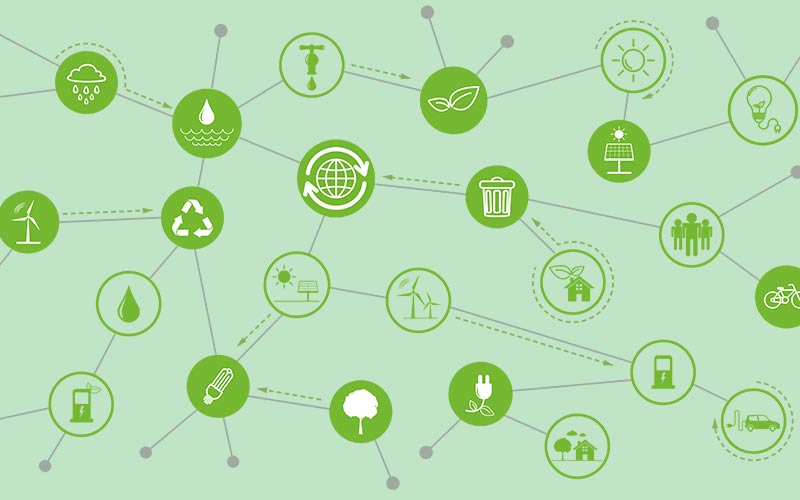Circular economy (CE) is a system in which resources are continuously reused, but digital technologies are essential for effectively managing these cycles. Artificial Intelligence (AI) and big data analytics have great potential in optimizing circular economy processes.
Contribution of Digital Technologies
Artificial Intelligence (AI) can predict where and how waste can be recycled. This allows businesses to manage their waste in the most efficient way and save energy.
Big Data Analytics helps identify the most efficient ways by analyzing resource flows. This technology can help companies optimize their resource management processes.
The integration of digital technologies enables broader adoption of the circular economy. Companies can present their resources to the market via industrial symbiosis platforms, manage them through AI, and enhance their efficiency with big data. These technologies play a critical role in achieving circular economy goals.
Promoting Large-Scale Industrial Collaborations: Contribution of Industrial Symbiosis to the Circular Economy
Industrial symbiosis is a business model where companies from different sectors share their resources, waste, and capacities to increase efficiency. Within the circular economy, industrial symbiosis is a key strategy to accelerate the recycling of waste, resources, and capacity.
Benefits of Industrial Collaborations
Eco-Industrial Parks are among the most common applications of industrial symbiosis. Different sectors share resources such as materials, energy, and water, which results in cost savings and environmental impact reduction.
Inter-Sector Synergy leads to innovation in collaborations. Waste from one sector can be a valuable raw material for another, keeping resources in continuous circulation.
Industrial symbiosis is an important tool for the successful implementation of the circular economy. Large-scale collaborations help convert waste into valuable inputs, protecting the environment while reducing costs.
Educating and Raising Awareness Among Consumers: Increasing Consumer Awareness for the Circular Economy
The success of the circular economy depends not only on industrial and government policies but also on consumer behavior. Increasing consumer awareness of the circular economy and encouraging sustainable choices can accelerate this transition.
Consumer Awareness and Behavior
Take-Back and Return Programs allow consumers to return products for reuse. This contributes to waste reduction and consumer participation in circular processes.
Sustainable Consumer Education helps people learn how to repair and recycle products. This is a critical step for waste management and environmental sustainability in the long term.
Consumer education increases the viability of the circular economy. Through take-back programs and sustainable shopping habits, consumers can become part of the circular economy.
Adapting Local and Global Business Models: New Business Models Based on Circular Economy
The circular economy must be adapted not only on a local scale but also on a global scale. Product-as-a-Service (PaaS) business models ensure that ownership of products remains with the manufacturer, thereby reducing resource use and supporting circular economy principles.
Advantages of Product-Service Models
Leasing and Subscription Services give consumers the opportunity to use products for a certain period instead of buying them. This makes recycling and reuse easier.
Take-Back Programs offer businesses the possibility to reintroduce old products into the loop through resale or recycling.
New business models based on the circular economy help companies generate long-term revenue while reducing resource consumption and waste. These models can be integrated into global supply chains, further strengthening the circular economy.


